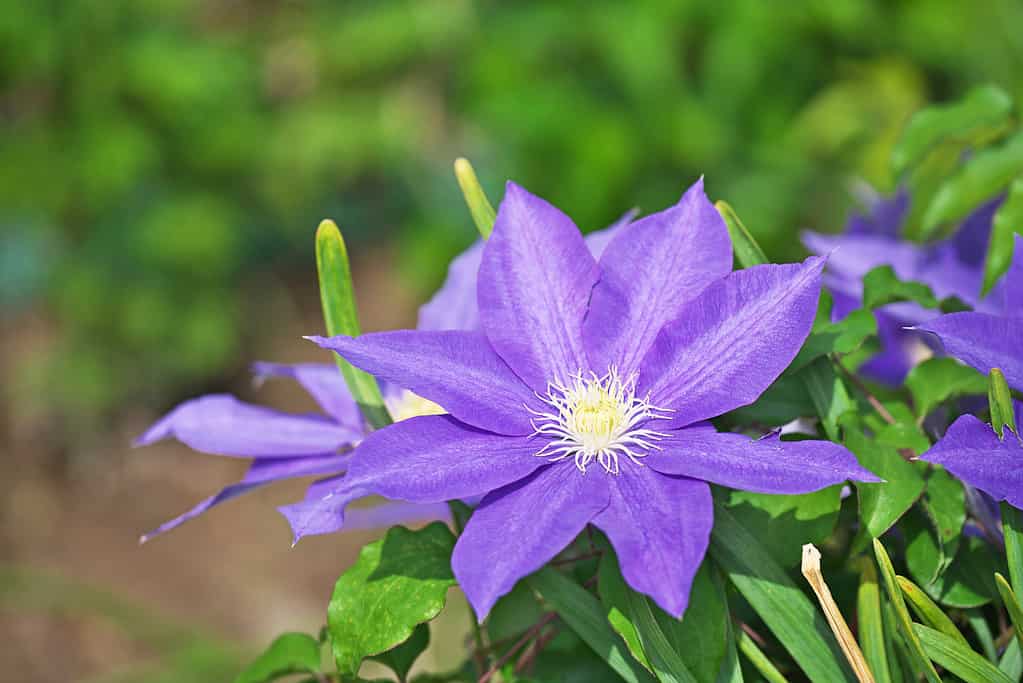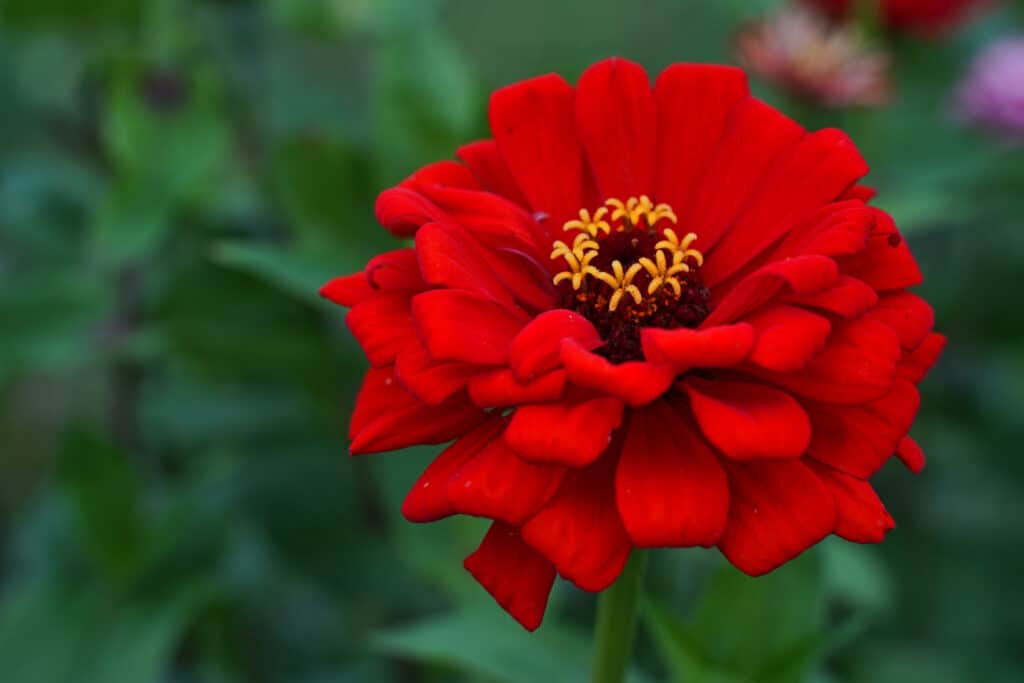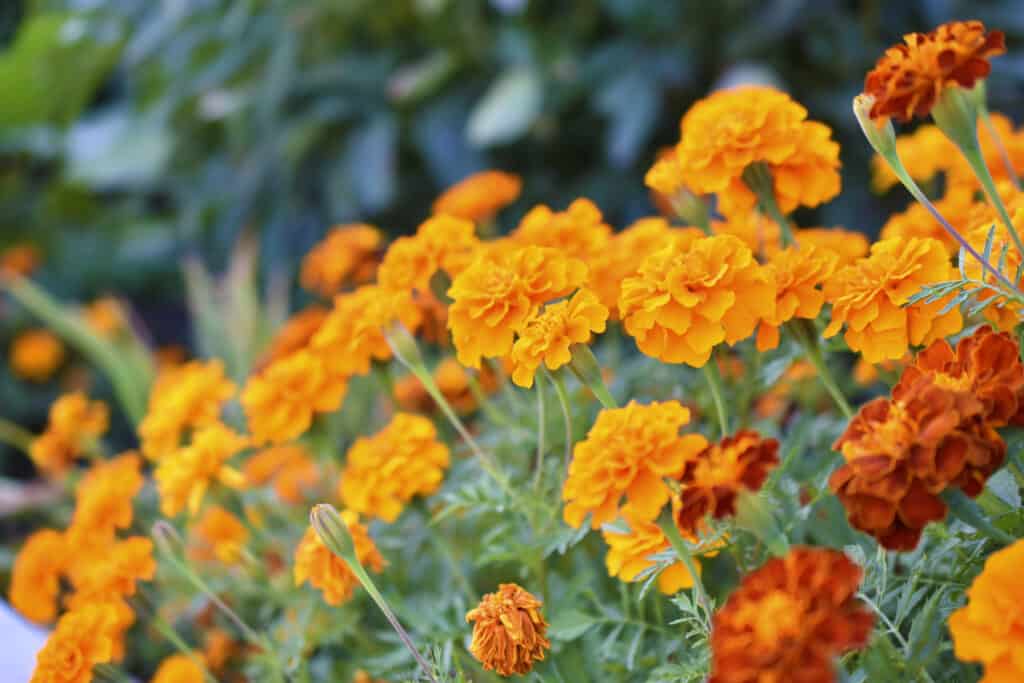Butterflies are almost universally adored, and many gardeners go to great lengths to attract them to their homes. While some people choose to cultivate their host plants, others may set out fruit for them to feed on. What you may not have known is that butterflies are attracted to certain colors, and gardeners can use this information to their advantage and transform their yard into a butterfly paradise.
However, one important thing to understand is that butterfly vision is vastly different from that of humans. According to a journal authored by Kentaro Arikawa, “Butterflies use color vision when searching for flowers. Unlike the trichromatic retinas of humans (blue, green, and red cones; plus rods) and honeybees (ultraviolet, blue, and green photoreceptors), butterfly retinas typically have six or more photoreceptor classes with distinct spectral sensitivities.” While butterflies are able to see many of the same colors we can as humans, they are also capable of detecting ultraviolet light in addition. Let’s explore six colors that butterflies can’t resist that will be sure to attract these creatures to your yard.
1. Purple

Butterflies aren’t particularly fond of the color blue, so be sure to incorporate shades of purple that are on the warmer side.
©iStock.com/igaguri_1
Purple is a beautiful color that both butterflies and humans enjoy. Luckily, a variety of flowers are available in different shades of purple, and each offers different benefits. For example, several clematis flowers are quite popular with pollinators such as moths, bees, hummingbirds, and of course, butterflies. These large, showy blossoms are not only aesthetically pleasing, but they are easy to grow and maintain. This makes it easy for even amateur gardeners to cultivate them. Another purple flower sure to please is the New England Aster. These flowers bloom during the fall, so they provide butterflies with an invaluable source of late-season nutrition.
2. Pink

Milkweed is highly toxic to a number of different animal species. However, monarch butterflies are able to digest this plant with ease.
©Nancy J. Ondra/Shutterstock.com
Countless people across the globe cite pink as their favorite color, and many butterflies feel the same way! Pink flowers are among the most popular with these little creatures, and there are many reasons why. Monarch butterflies are partial to milkweed in particular, and swamp milkweed erupts with tiny pink blossoms during the spring and summer.
If you’re looking for a late-blooming pink flower to keep butterflies visiting all season long, consider planting Hollyhock. These tiny pink blossoms bloom during the late summer and early fall and they are able to attract a wide array of pollinators much like clematis. Phlox, azaleas, snapdragons, and bee balm are also available in a variety of pink shades and all are sure to attract many different butterfly species to your garden and yard.
3. Red

Zinnias are widely regarded as one of the easiest flowers to cultivate. These large, flashy blooms grow best under full sun.
©iStock.com/Kathy Reasor
Red is another popular color among butterflies, and many will seek out plants of this color specifically to feed on. This gives gardeners countless options to choose from, as red plants are wildly abundant. Some people may want to construct a rose garden while others might prefer the appearance of red zinnias, perennial lobelia, or azaleas. Whatever flower or plant you choose, be sure to seek out bright shades of red, as butterflies seem to be more attracted to vibrant colors over muted tones.
4. Orange

Butterflies’ least favorite colors seem to be blue and green.
©iStock.com/Valeriy Lushchikov
There is no shortage of bright orange flowers and plants in nature, which makes planting a golden garden quite easy. In fact, gardeners might feel overwhelmed by the amount of choices they have when it comes to this shade! For example, helenium is an orange flower that butterflies just can’t get enough of. This perennial plant boasts bright orange and yellow petals that attract bees and birds as well. Daylilies are another wonderful choice. However, cat owners are cautioned against planting these flowers if their pet lives both indoors and outdoors. A variety of lilies are highly toxic to cats, so another plant choice may be preferable in these instances. Marigolds, butterfly weed, and California poppies are excellent alternatives.
5. Yellow

Yellow flowers symbolize happiness, healing, humor, and friendship.
©LauraTabor/iStock via Getty Images
When it comes to butterflies’ preferences, yellow is among their most beloved colors. Luckily, yellow is quite common in nature, and gardeners will have a wealth of flowers and plants to choose from. Yarrow is a bright yellow butterfly favorite that also has medicinal significance, which makes planting it a win-win for many individuals. Goldenrod, black-eyed Susans, peonies, and coreopsis are also wonderful options.
6. White

Be sure to consult your local wildlife authority if you have any questions about which plants are native to your area.
©iStock.com/Vitaly Shevankov
Although white isn’t technically a color, butterflies are still drawn to this shade. White flowers add a touch of class and elegance to any garden, so those looking for a refined look can still appreciate the presence of pollinators as well. Some white flowers butterflies enjoy visiting are buttonbush, clematis, daisies, and phlox.
The photo featured at the top of this post is © Nancy J. Ondra/Shutterstock.com
Thank you for reading! Have some feedback for us? Contact the AZ Animals editorial team.







